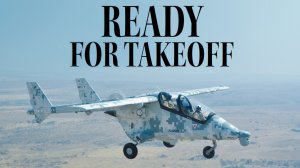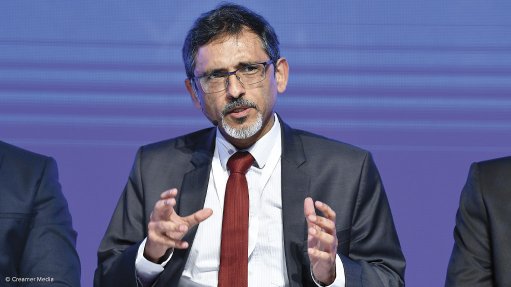Production of Ahrlac aircraft set to begin in early 2017


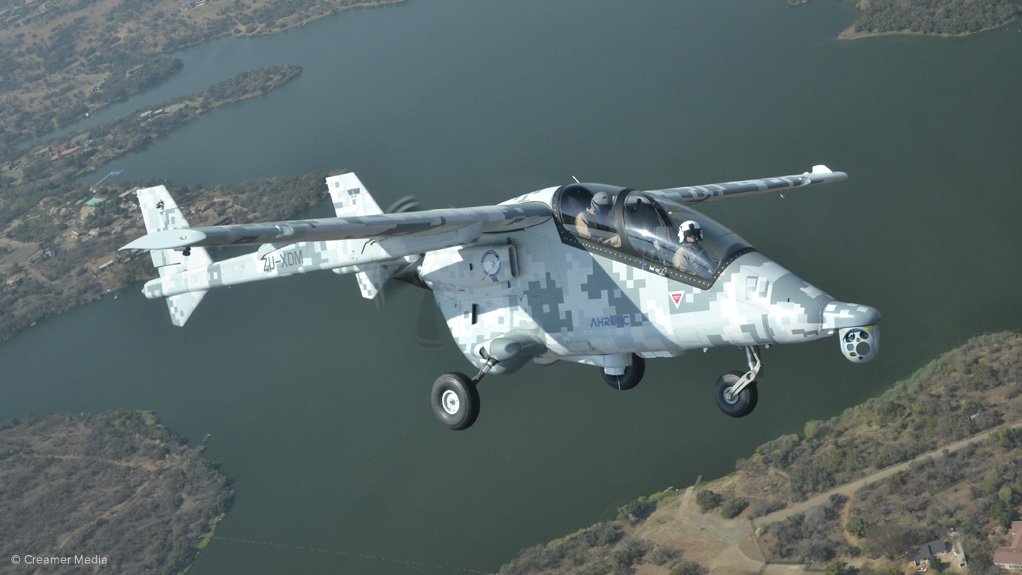
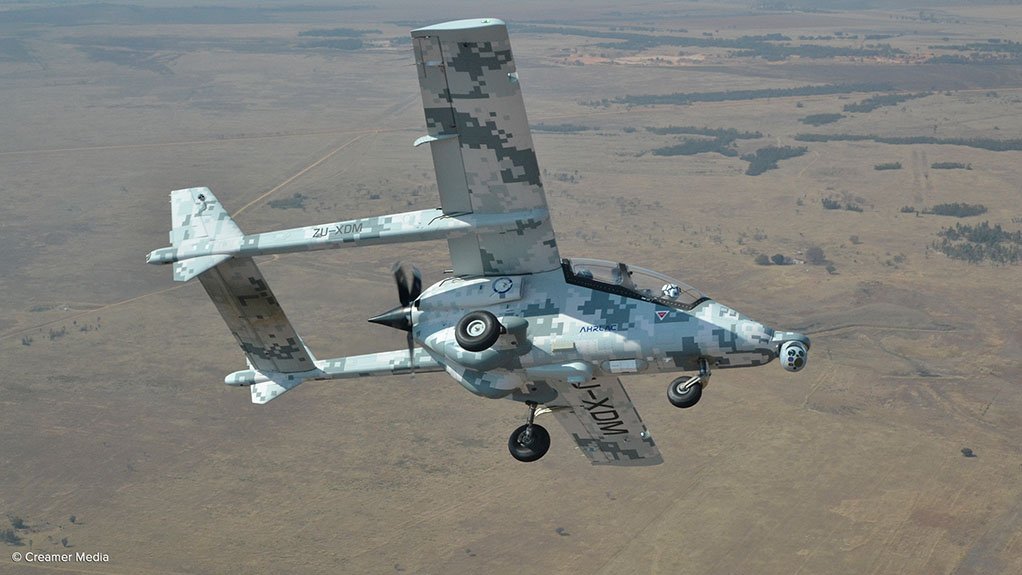
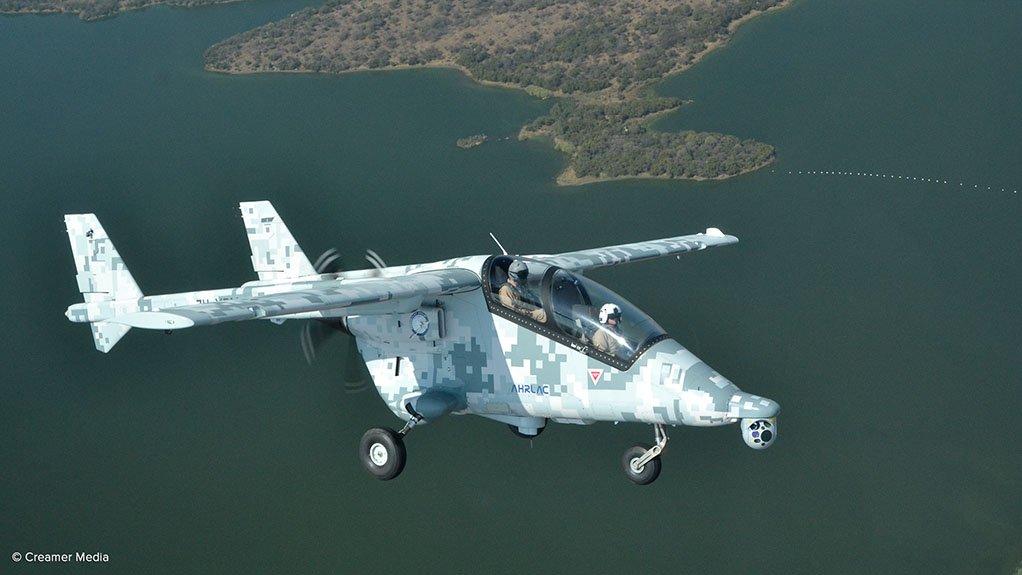
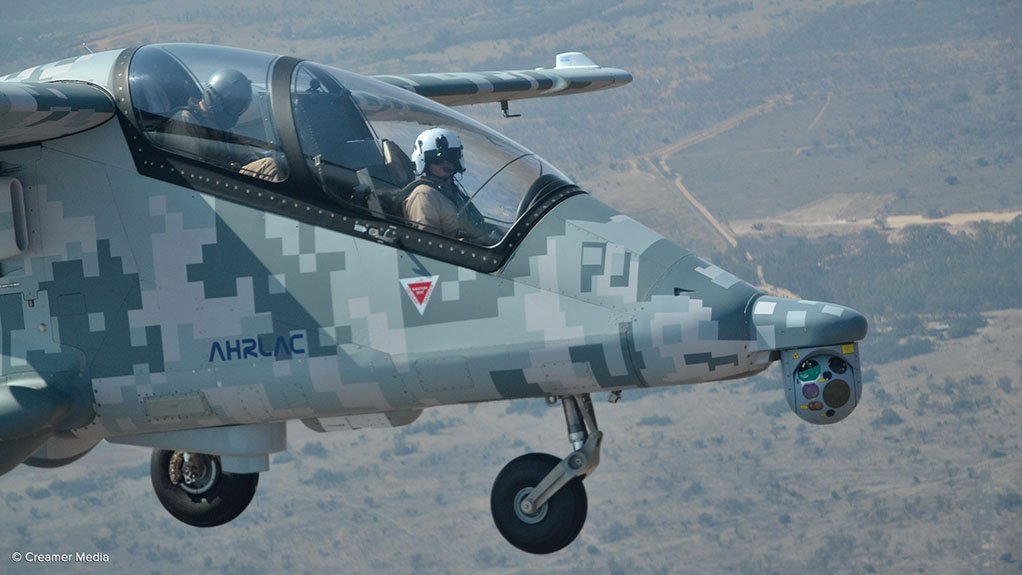
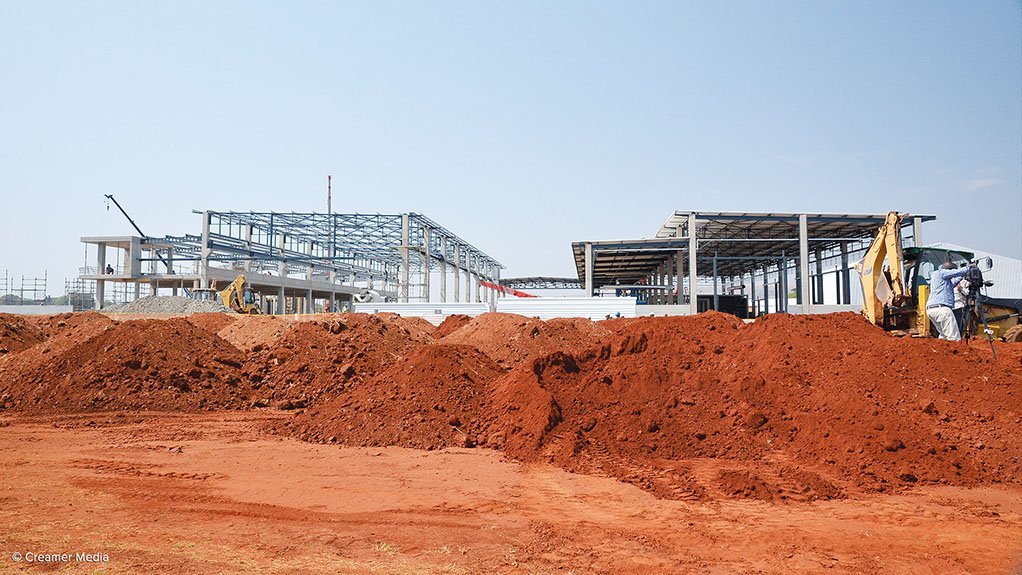
BOEING APPROVED The US aircraft manufacturer recently vetted and certified Ahrlac to be fitted with its US military-specified missions systems
Photo by Dylan Slater
AEROBATICSAhrlac being flown near Wonderboom Airport is currently undergoing dynamic flight tests, including aerobatic manoeuvres
Photo by Dylan Slater
VERSATILITY Ahrlac is designed to perform a range of varying tasks, from border patrols to light attack missions
Photo by Dylan Slater
ARGOS II TESTINGThe nose-mounted Airbus Argos II sensor recently underwent systems testing using pitch and yaw sensors mounted to the pilots helmet
Photo by Dylan Slater
UNDER CONSTRUCTION A new 15 000 m2 factory is being built at Wonderboom Airport complex to manufacture two airframes a month
Photo by Dylan Slater
The South African-designed, -developed and -built Advanced, High-perform- ance, Reconnaissance, Light Aircraft (Ahrlac) is due to enter line production in early 2017, with the construction of a purpose-built factory at Wonderboom Airport, north of Pretoria.
The Ahrlac platform comes in five variants for applications in civilian and private use, policing and antipoaching, training, safety and security, and military.
The 15 000 m2 dual-workshop factory is situated within the Wonderboom Airport complex and, once completed, will boast capacity to produce two Ahrlacs a month.
The first Ahrlac is due to roll off the production line in early 2017.
Ahrlac Holdings CEO Dr Paul Potgieter notes that additional land has also been earmarked at the airport to potentially build another two factories to increase production to four airframes a month, should it be required.
“We are confident that we will fill that factory (in terms of orders) to justify the investment made in its construction,” states Paramount Group chairperson Ivor Ichikowitz.
The first workshop machines are due to be moved and installed in the new factory this month, which will accommodate 200 personnel, up from the current staff complement of about 80.
Potgieter highlights the establishment of the Ahrlac factory as the largest single investment in Wonderboom Airport since its inception in 1937, with the City of Tshwane granting the longest-ever lease of 50 years to any company at the airport.
“We are here for the long run,” he adds.
Other new developments on the Ahrlac include the installation of a locally made “purpose-built” propeller from propeller company Hartzell. The installation and systems testing of a nose-mounted sensor – the Airbus Argos II – which is linked to pitch and yaw sensors on the pilot’s helmet, took place last month. The Argos II provides day and night imaging across three spectral ranges (infrared, near-infrared and visible imaging), with its live feed linked to the copilot/systems operator and displayed on a 21" screen.
In addition, Ahrlac pilots have begun dynamic flight testing of the aircraft by performing aerobatic manoeuvres.
Shot in the Dark
Since its design was first made public in 2014, the Ahrlac project was labelled by some critics and the media as a “shot in the dark”, as it was designed and developed without a single order being filled or serious interest from potential customers.
However, Paramount Group – which funded the design, development and construction of Ahrlac – last month announced an extension of prior agreements with US aircraft manufacturer Boeing, whereby the military version of Ahrlac – the Mwari – will be jointly developed and marketed with Boeing to the US and other potential customers around the world.
“Negotiations are under way with a number of countries around the world,” Ichikowitz tells Engineering News.
Under the collaboration agreement, Boeing will install a US military- specification mission system. Boeing’s mission systems are the same type that are currently used in Boeing’s AH-65 Apache and AH-6 Little Bird attack helicopters.
Collaboration involving local and US military hardware (excluding weaponry) is possible, as Paramount Group complies with the International Traffic in Arms Regulations, which are US-legislated for export control. Collaboration is enhanced by South Africa’s status as a nonaligned country in terms of its geopolitical standing.
However, although the Mwaris, which are jointly developed and marketed with Boeing, may be classified as Boeing products, Ichikowitz asserts that full line production of all Ahrlac airframes will remain a South African endeavour. Should future orders exceed manufacturing capability at the Wonderboom factory, another – potentially overseas – manufacturing option, might be sought, but only as a last resort, he adds.
“One of the aspects that we focused on a lot while developing the Mwari is how we, as a South African entity, could get our piece of the American market. The US market is the holy grail of defence markets – it has the biggest defence budget and the largest order volumes – and, from a sustainability perspective, the South African industry desperately needs a US customer,” he explains.
Building Industry Capability
Ichikowitz highlights that the domestic manufacture of the aircraft is core to Paramount Group’s focus on building South African capability, and developing skills and creating jobs in its aerospace industry.
“The Mwari is something we are very proud of. It is something South Africa can be very proud of,” he states, adding that it is one of the largest privately funded military aircraft projects of its kind in the world.
“It looks a lot simpler than it is, and this is what makes it special – it is simple . . . its technology has been drawn from Paramount Group personnel experience from operations in challenging conditions.”
Ichikowitz emphasises that the Mwari “ticks all the boxes” in terms of operating a military aircraft in challenging economic times – from reducing operational costs and requirements for ground support to increasing reliability and being an airborne platform that acts as a force multiplier to the Navy, Army and Airforce.
The initial development of the Mwari, he points out, was aimed at meeting the requirements of clients in developing countries, because those were the customers that the company interacted with at the time. However, Ichikowitz says Paramount Group has discovered during the past two years that the developed markets of the US, Europe and Asia have “exactly the same requirements”.
In addition, he reports that there has been substantial interest from African governments, although the order volumes would be smaller than those from European and US customers.
Going forward, two versions of the Mwari will be available – the Boeing version for the US and US-centric markets and the Paramount version for other markets.
Versatility Focus
The first flight of the Ahrlac test aircraft took place on July 26, 2014, with the test-bed having since accumulated 230 hours of flight, conducting 180 sorties and participating in local and foreign “border camp” operations to test its field capability.
Potgieter says the Ahrlac also participated in the Race for Rhinos charity event in June. It was flown to Botswana, where it was accompanied and supported by a “minimal ground crew” and operated in challenging desertlike conditions. During this operation, he says, the Ahrlac was flown for the “longest duration and longest distance we have ever done”, traversing the Makgadikgadi Pan and spending a night at the remote Kubu Island, with crew and equipment contained in only two small vehicles.
The Ahrlac can land on semiprepared airfields using its powerful flap system. It can also be operated in the field without any support crew, as it can start using on-board systems, and its infrastructure enables the pilot and copilot to enter and disembark the aircraft without ground-support stairs or ladders.
“It can be flown and landed in the bush, parked for a week and then started and flown without any ground support,” says Potgieter.
Further, the pusher-type rear-facing propeller and engine layout enable the pilot to have unrestricted visibility, and the elevated seating position of the copilot’s station (similar to the layout of the Rooivalk heli- copter used by the South African Airforce) allows for enhanced situational awareness of the systems operator.
A key factor in the Mwari’s versatility capabilities is the large cavity under the cockpit, into which various systems can quickly be installed and replaced with other systems. For instance, in a training situation, the cavity can be fitted with flight data recorders to capture pilot inputs, or radio-wave detection modules to detect cellular phone signals from suspected poachers (a popular technique used to locate poachers).
The Mwari also has 25 hard points onto which an array of sensors can be installed.
This versatility can help reduce the number of different and application-specific aircraft in a regular air force’s fleet, with the configu- ration of fewer Mwaris to meet the needs of specific applications. For example, one Mwari could be used for surveillance, border monitoring, patrol and even light attacks using a 20 mm machine gun, missile pylons and bombs.
In terms of attack solutions, the Mwari is a highly viable option, owing to its low operational costs, compared with those of fighter jets or even modified lead-in fighter aircraft. “With a rise in rebel groups using low-cost assets, such as suburban utility vehicles, the Mwari allows for an airforce to deploy its own assets on a comparable cost scale to combat a rebel/asymmetrical threat. With the Mwari, you are not using a multimillion-dollar jet with expensive missiles to respond to a threat from small rebel groups using civilian vehicles equipped with weapons,” says Potgieter.
To operate an Ahrlac costs about $800/h, which is significantly cheaper when compared to about €30 000/h for a Eurofighter Typhoon.
Other operational parameters of the Ahrlac include a cruising speed of 270 knots, an operating ceiling of 30 000 and a range of 1 300 nautical miles (nm) using internal fuel tanks, extended to 2 000 nm with additional wing tanks.
Ejection seat tests using Martin-Baker ejection seats were conducted recently, with approval from Martin-Baker being granted to Paramount Group to allow for its use in the aircraft.
Comments
Press Office
Announcements
What's On
Subscribe to improve your user experience...
Option 1 (equivalent of R125 a month):
Receive a weekly copy of Creamer Media's Engineering News & Mining Weekly magazine
(print copy for those in South Africa and e-magazine for those outside of South Africa)
Receive daily email newsletters
Access to full search results
Access archive of magazine back copies
Access to Projects in Progress
Access to ONE Research Report of your choice in PDF format
Option 2 (equivalent of R375 a month):
All benefits from Option 1
PLUS
Access to Creamer Media's Research Channel Africa for ALL Research Reports, in PDF format, on various industrial and mining sectors
including Electricity; Water; Energy Transition; Hydrogen; Roads, Rail and Ports; Coal; Gold; Platinum; Battery Metals; etc.
Already a subscriber?
Forgotten your password?
Receive weekly copy of Creamer Media's Engineering News & Mining Weekly magazine (print copy for those in South Africa and e-magazine for those outside of South Africa)
➕
Recieve daily email newsletters
➕
Access to full search results
➕
Access archive of magazine back copies
➕
Access to Projects in Progress
➕
Access to ONE Research Report of your choice in PDF format
RESEARCH CHANNEL AFRICA
R4500 (equivalent of R375 a month)
SUBSCRIBEAll benefits from Option 1
➕
Access to Creamer Media's Research Channel Africa for ALL Research Reports on various industrial and mining sectors, in PDF format, including on:
Electricity
➕
Water
➕
Energy Transition
➕
Hydrogen
➕
Roads, Rail and Ports
➕
Coal
➕
Gold
➕
Platinum
➕
Battery Metals
➕
etc.
Receive all benefits from Option 1 or Option 2 delivered to numerous people at your company
➕
Multiple User names and Passwords for simultaneous log-ins
➕
Intranet integration access to all in your organisation


